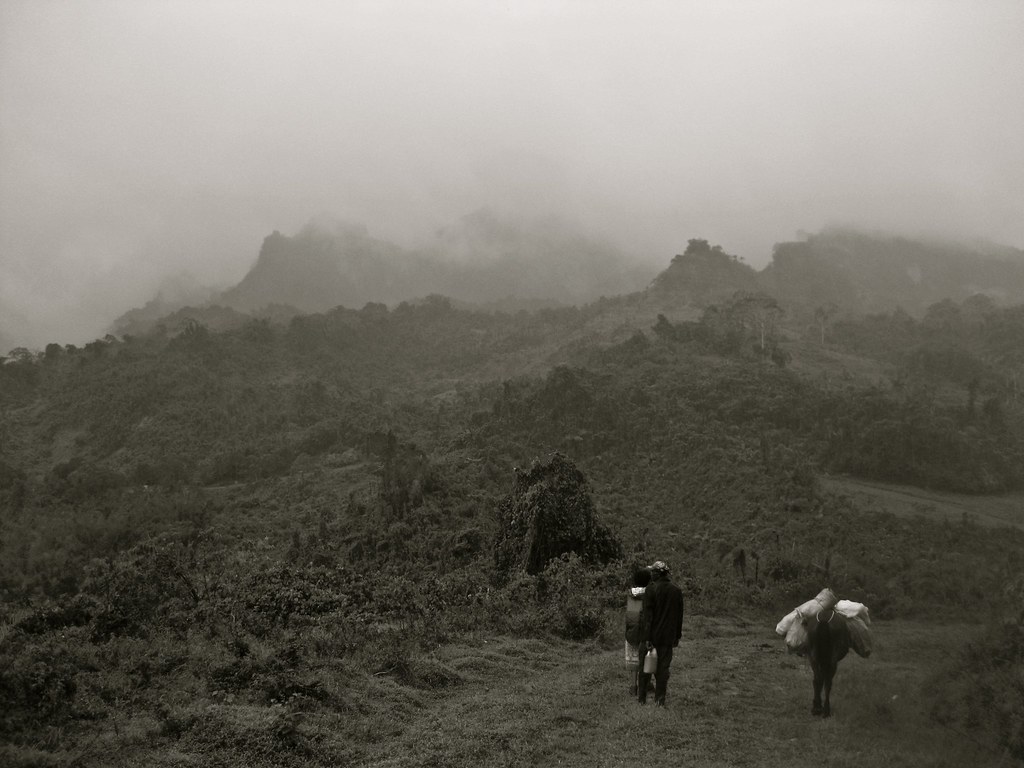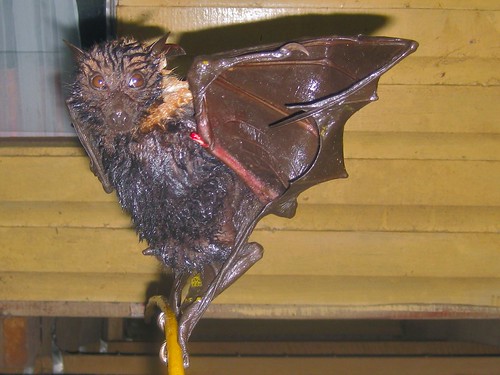
The aftermath of Cyclone Mick kept the skies gray and misty for the following three days. Nearby villages sent word of their damages; Nakavika was one of the luckier communities, thanks to their relocation. For decades, Nakavika sat in a nook of a river bend, level with the mighty Luva, until the mid 1950s when a massive storm flooded the entire inhabited plain. The new location had me feeling quite safe - surrounded by the cover of mountains, sitting above the ravines, and relatively out of the bush. Normally Nakavika was a sunny, colorful paradise (forget the swarms of flies), but this week, it presented its difficulties by the bucket load.
Wash Them Hands!

The day following the most intense storm activity, Garrett and I took advantage of the sopping ambiance by focusing our project objectives on a theme involving lots and lots of wai (Fijian for water): hand-washing week. Starting off on day one, we created competitive games with slippery soap and scrubbing techniques while we all stood outside in the misty air. And since the village's source of water was disconnected by torrential water power knocking out the pipes, we filled buckets from the dripping eaves to make the hand washing possible.
We noticed there wasn't a pressing urge by anyone to wash their hands with soap after any dirty activity (other than slaughtering animals, thankfully), especially when the tap didn't work. Garrett and I sometimes had to work all morning to figure out how to get water for our next lesson plan with the kids. Our efforts and sweat had to have made an impression on the observing few, and we exploited those moments as if they were the lessons themselves.
The disconnected pipe made showering into a labor intensive task. Feeling concerned about bathing clothed downstream of a wading horse, Abel took me to the water fall, my favorite little oasis, to at least rinse off. Normally, we would cross a land bridge, climb down a small wooded path, and reach the river bed that led to the waterfall. On this trip, post-cyclone, we had to weave around huge mounds of eroding jungle in the road, pull our flip-flops out of the sinking mud, and scramble down a bare wall of earth recently exposed by a landslide. The land bridge was no longer there, and the four culverts that formerly ushered through the water were no long in such good shape; two sat exposed, one smashed 20 feet away, and the last one unseen.
It had flown down the narrow, shallow stream and rocketed over the waterfall, shattering in massive pieces in a final resting place positioned far enough from the waterfall to show evidence of the intense water power. I was in awe. The water was frigid. I stood under a pounding froth on the stairstep rocks, sudsing up where yesterday a high-speed culvert would have pounded me senseless, turning my skull into shrapnel.
15 Year-old Balloons
The sun began peaking out the next day, giving us false hopes that the water would be fixed. Acting on a genius plan we concocted the day before, Garrett and I searched for a working faucet or method with which to fill up water balloons for the day's lessons - all ideas failed. Thankfully the kids knew of a water source that could possibly do the trick: a PVC pipe positioned upstream of some pig pens. We took off down the road with forty balloons, a bucket, and three determined 5 year-olds.
It worked! The pressure near the foot of the pouring water was enough to fill the balloons - ones I had brought from home that wore the name of my dad's old business. The last time they had a purpose was 15 years prior at a company golf outing. I couldn't help but think of my age, geography, and how hilarious the shapes were of these morphing orbs - all of which reminded me of fertility statues.
And because their latex skins were so feeble, they popped dramatically almost as often as we succeeded in finishing one. Stacking them in the bucket wasn't an option. We gave each child two balloons to carry with all the care and caution they could muster. I took off my sulu and made a hammock for ten of them, about five of which exploded like watery fireworks on the walk back. Of the six transported by the youngins, two remained, both surprisingly carried by the most haphazard and irresponsible boy.
Luring the kids in with our colorful toys, we soon had a class of many, all eager to compete in our balloon toss after listening to "The Wonders of Precious Water." Parents and elders emerged from their homes to sit in the grass and heckle their offspring. The whole village engaged in our teachings and merriment.
Bats for Dinner

The rain returned again, leaving us stranded in our home without ample options. Garrett was getting stir-crazy and asked if he could accompany our host father, Weiss, to the next village where he was picking up Fane from her jaunt into town. The road through the highlands was still in horrible shape, so for those mothers and family members in need of supplies from town, they had to cross the naked Namando cavern on foot, walk five kilometers to Namuamua and take a long boat to Navua at the coast. Weiss thought Garrett couldn't tackle the hike like a Fijian and encouraged him to stay, but Garrett couldn't stand not exerting himself.
They ran off into the mist. I stayed to conduct a lesson on the alphabet and creativity on the floor of our home.
Three hours later, I heard the my kaivalangi partner calling from many from houses away. I rushed outside to see what dangled from the new branch he held: a bat. "Rabies!" was my first thought, but fruit bats in Fiji don't suffer the same maladies as our infamous winged cretins. They had caught a Fijian dinnertime favorite, and while I pondered how to get out of gnawing fleshy wings that night, Weiss hung the bat from a power cord and let it hang out for a few more hours before sunset.
A word of advice for those visiting traditional Fiji, be careful walking into a home at night. Dangling shadows are most often not bags of laundry.
Would you eat bat? Any other comments on these approaches to teaching basic hygiene?


